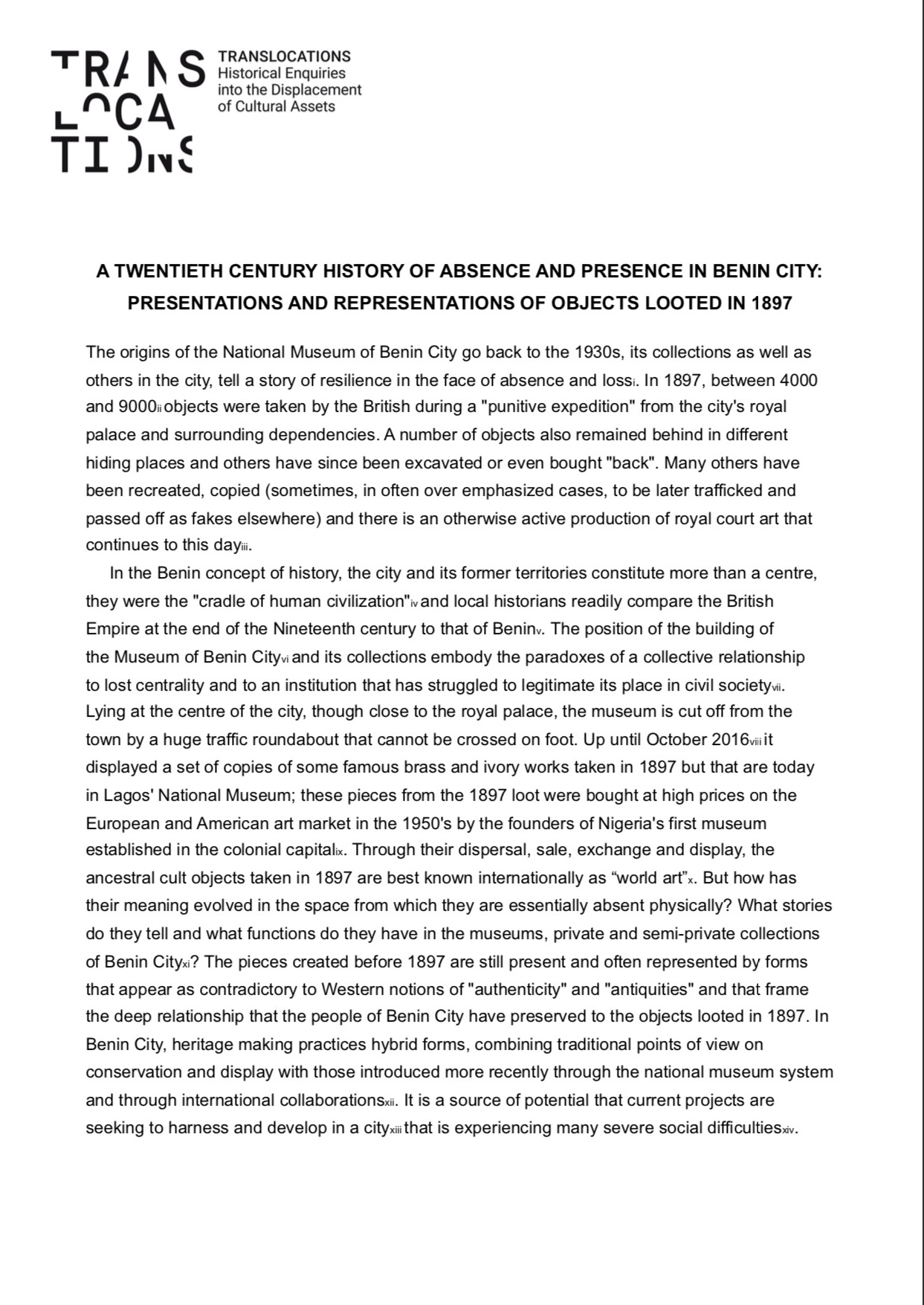Concept and Research Design
Controversies over the territorial displacement of cultural assets in times of war and peace is an essential component of cultural history and is of greater relevance than ever. The consequences of such translocations are among the great challenges facing society in the 21st century: Lawyers, museum workers, politicians, ethnologists, archaeologists, art dealers, political activists, journalists, artists, and writers struggle daily to make "fair" cultural policy decisions, for example in the settling of restitution disputes. The most often asked questions include: To whom do these objects belong? Who has a right to their interpretation? And how can provenance research help us understand these issues?
Today, it is not only those displacements resulting from physical force in the past that are seen as problematic. Increasingly, criticism is also directed towards forms of translocations resulting from academic or aesthetic demands that were facilitated by an asymmetric balance of power (be it of an economic, political or epistemic nature). The field of translocations as such – that is, not the history of the transferred object, but the actual phenomenon of the transfer itself, with all its traumas, discourses, actors, gestures, techniques and representations – has hardly been recognized, and certainly not fully researched.
The key objective of translocations – Historical Enquiries into the Displacement of Cultural Assets is a compilation of scholarly findings about the social, political and cultural implications of past displacements of cultural assets, which will deliver orientation and direction for the future. This historical research deliberately aims to shape a societal dialogue process and to develop potential courses of action. translocations will not resolve property or restitution disputes. The cluster is instead positioned to address questions on a scientific level through history, social and visual sciences: What did such displacements across time and space trigger, how were they perceived, remembered, and exploited? The subject of research for translocations are large-scale displacements of cultural assets since antiquity, such as: art theft and spoliation organized by the state in times of war and occupation, seizure of cultural goods during colonialism, displacements as a result of a partition of excavation discoveries and research expeditions, a material diaspora of entire civilizations expedited by the art trade, confiscations justified through ideology, nationalisations, or en masse disposals of private property.
translocations will carry out necessary foundational research in this field.The translocations project will focus on two main aspects. First, it will examine the moment when a cultural asset in transfer is integrated into public museums and libraries, and the incorporation of that foreign object into a native narrative leads to multiple effects of cross-fertilization across generations. These cross-fertilizations are of a profoundly cultural, intellectual, and aesthetic nature. Secondly, it will examine the moment when feelings of injustice, expropriation, and loss become manifest in societies or interest groups, and questions of ownership, identity, and pride become linked with the displacement of material objects and their insertion into new contexts. translocations approaches this phenomenon independent of the legality or illegality of the respective events. The cluster deals with complex temporalities, uncanny resentments, and various processes of memory. The guiding question will concern the perspective of those who perceive themselves as “dispossessed” across eras and regions, based on any possible construction of identity. This perspective may not always be defined by demand or by grief.
The international translocations team is based at the Technische Universität Berlin’s Department of Modern Art History. Under the direction of Prof. Dr. Bénédicte Savoy, it will operate for an initial period of three years until September 2020. The cluster is funded primarily through the German Research Foundation’s Gottfried Wilhelm Leibniz Prize, which was awarded to Bénédicte Savoy in 2016.
Further Information:
La mémoire restituée des œuvres volées. Entretien avec Bénédicte Savoy, 26 juin 2015
The Recovered Memory of Stolen Works of Art. An interview with Bénédicte Savoy, 22 February 2016
Fundamental Projects
translocations is based on four fundamental collective research projects: a digital atlas, a virtual library, a glossary, and an image repertory on the iconography of translocated cultural goods.
The visualization of web-based mapping will allow us to structure and amalgamate historical events, reaching beyond research into isolated incidents and rendering the extent of translocations tangible.
The library will unite well-known but widely dispersed texts ranging from Cicero to Quatremère de Quincy, Victor Hugo, Carl Einstein, and Kwame Anthony Appiah, thus revealing hidden connections across broad historical and cultural divides.
The glossary will provide a critical historical analysis of terms from different linguistic contexts, investigating their ideological and theoretical implications.
A database of pictorial sources is the fourth core element of project material: How are seizures, destructions, removals, conquests, new and re-classifications, and translocations actually represented? How is the scene set? What do the places look like where cultural goods are now absent? Our particular attention will be on political iconography and medial means such as documentary and propaganda films and photography, or even amateur internet videos.
Gradually, initial findings of the translocations research will be made visible here.
Case Studies
translocations will also give an international team of doctoral students and postdoctoral researchers the opportunity to develop individual case studies. The depth of detail of these microhistories will help sharpen our understanding of the trans- and global-historical implications of the displacement of cultural heritage.
Entanglements
The research cluster translocations concentrates and supplements the research profile of the TU Berlin Department of Modern Art History, which has been developed over the last 15 years. It is also strongly intertwined with the Chair for Cultural History of European Cultural Heritage (18th-20th century) led by Bénédicte Savoy at the Collège de France. In close cooperation with two existing research axes at the institute, Transnational and Transcultural Museum History and Art Market and Provenance Research, the cluster's work will also be directly integrated into student curriculum at the university through research seminar formats. The integration of translocations into the established and dynamic Franco-German research environment will benefit existing and new projects.
Associated research projects
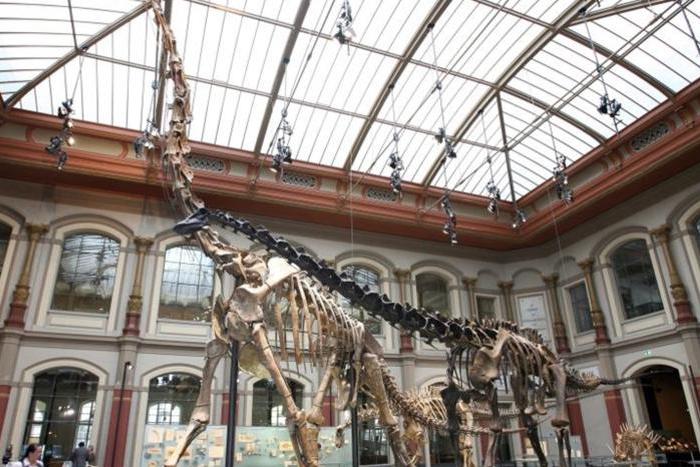
Dinosaurs in Berlin! Brachiosaurus brancai - a Political, Scientific, and Popular Icon
Supervision: Bénédicte Savoy, Execution: Mareike Vennen
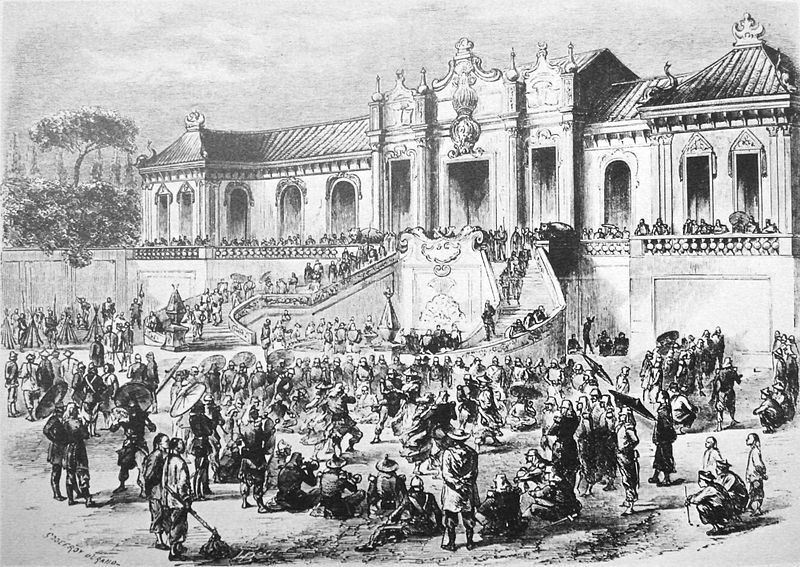
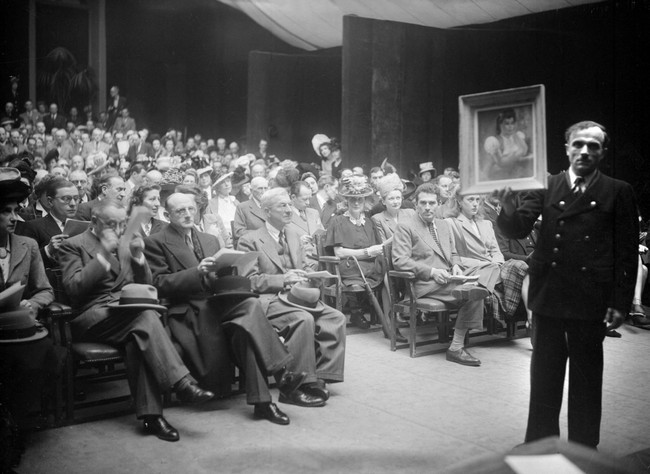
Repertory: The French Art Market During during German Occupation in World War II
Direction: Berlin (TU): Bénédicte Savoy, Paris (INHA): Eric de Chassey, Scientific Coordination: Berlin (TU): Eyke Vonderau, Paris (INHA): France Nerlich, Project Team: Berlin (TU): Elisabeth Furtwängler, Paris (INHA): Ines Rotermund-Reynard
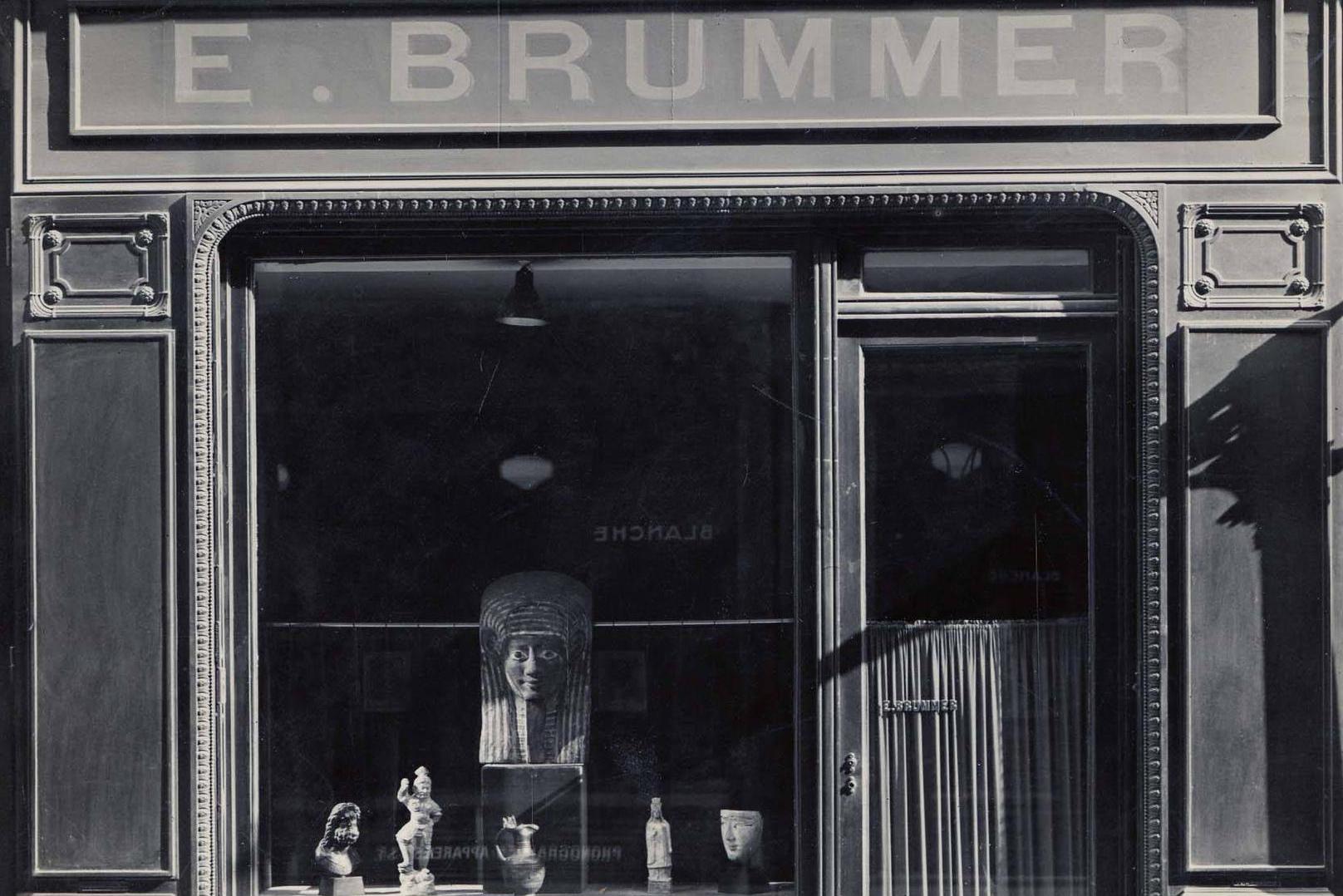
Acquisitions made by the Berlin State Museums on the Parisian Art Market during the Occupation 1940-1944
Contact: Mattes Lammert
Acquisitions made by the Berlin State Museums on the Parisian Art Market during the Occupation 1940-1944
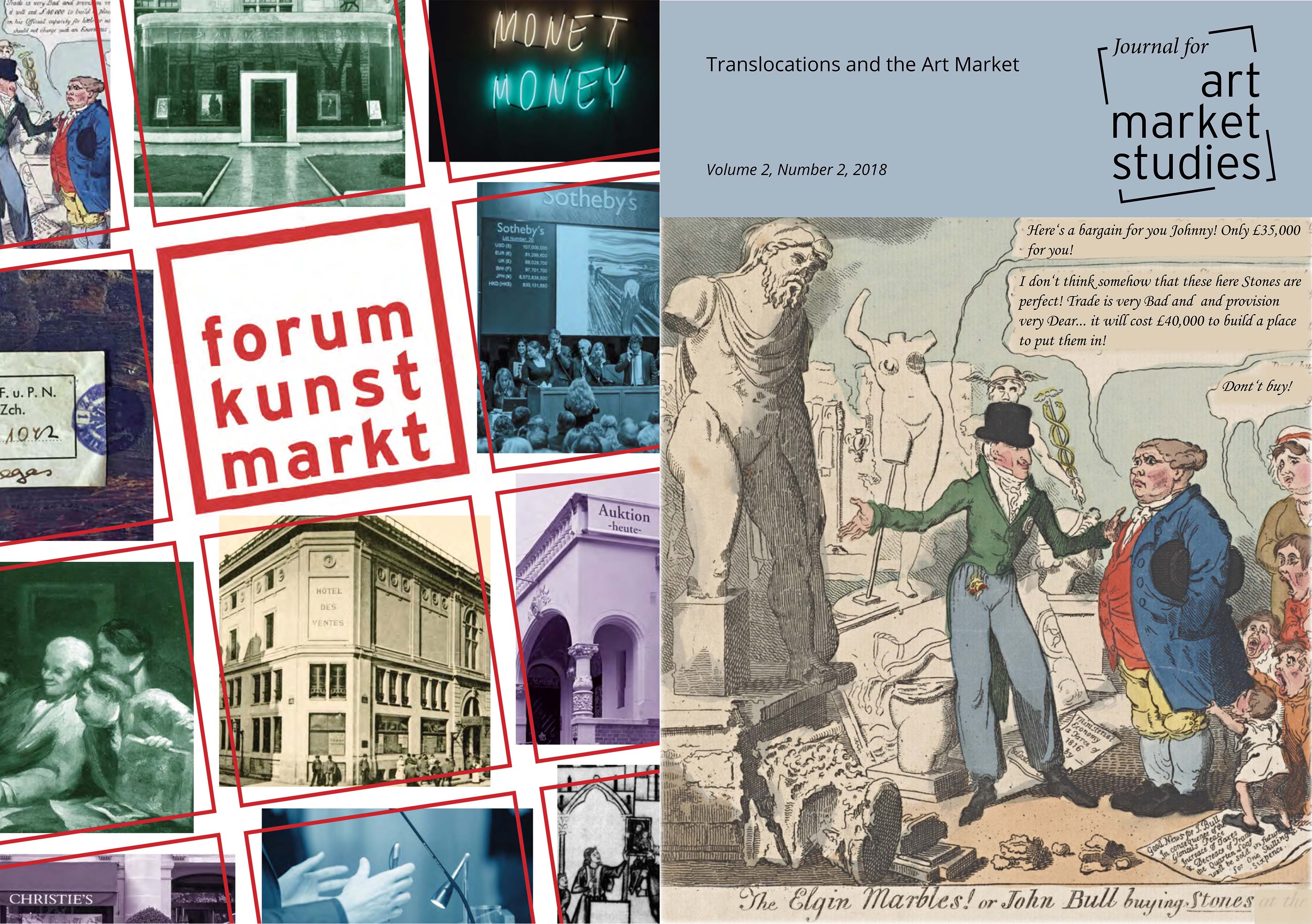
Centre for Art Market Studies
Founding members: Dr. Dorothee Wimmer, Prof. Dr. Bénédicte Savoy, Dr. Johannes Nathan.
Centre for Art and Market Studies
Journal for Art Market Studies
The Journal for Art Market Studies is an academic peer-reviewed open-access journal for current international research on the art market of all periods.
Publications
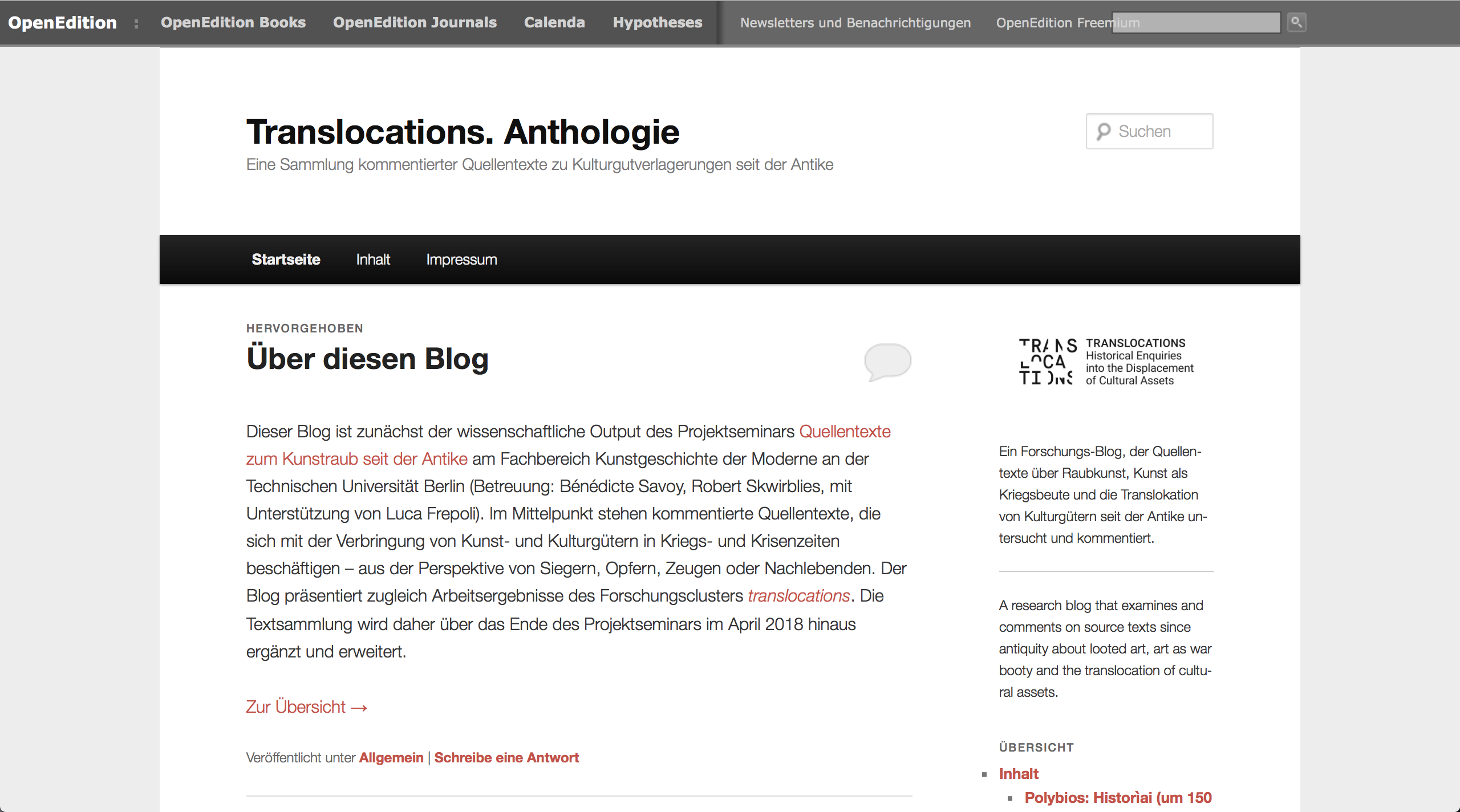
Blog: Translocations. Anthologie
This blog is the scientific output of the project seminar source texts on looted art since antiquity at the Department of Modern Art History at the Technische Universität Berlin (supervised by Bénédicte Savoy, Robert Skwirblies, with the support of Luca Frepoli). The focus is on annotated source texts dealing with the displacement of art and cultural assets in times of war and crisis - from the perspective of victors, victims, witnesses or survivors.
Blog Translocations. Anthologie
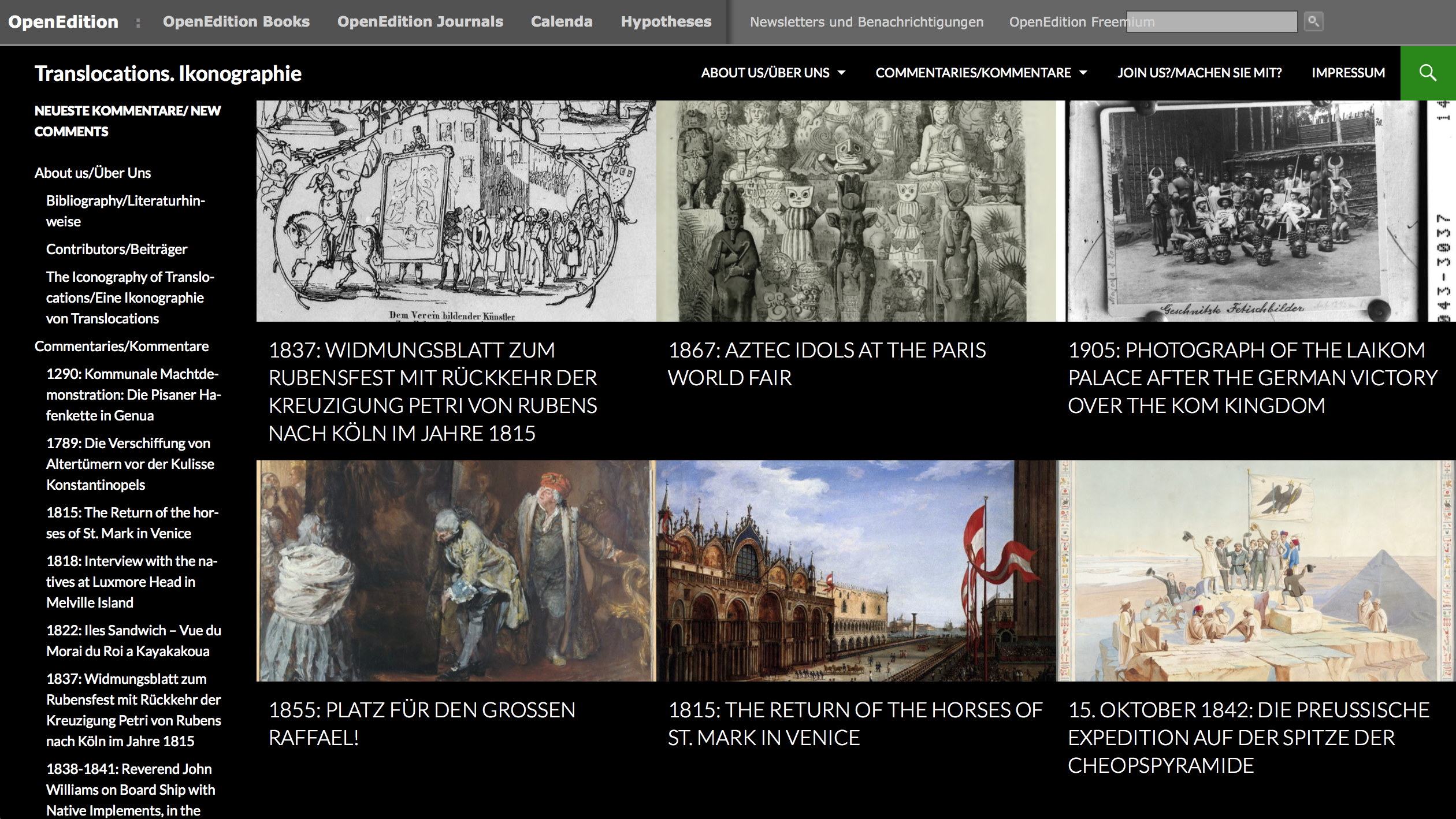
Blog: Translocations. Ikonographie
The collection of image sources created here on the blog constitutes the fourth core element of project material: How are seizures, destructions, removals, conquests, new and re-classifications, and translocations actually represented? How is the scene set? What do the places look like where cultural goods are now absent? Our particular attention will be on political iconography and medial means such as documentary and propaganda films and photography, or even amateur internet videos.
Blog Translocations. Ikonographie
translocations-Antenna Paris
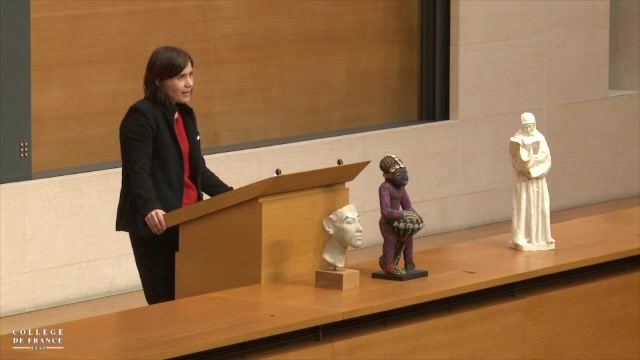
At the Collège de France, Léa Saint-Raymond will be in charge of the Paris translocations office. With her, associated young researchers will enrich the cluster's thinking. The translocations antenna Paris will also be strengthened by the bi-national planned research (2017-2019) on National Socialist Art Theft with the INHA. More information coming soon.
Projectseminars
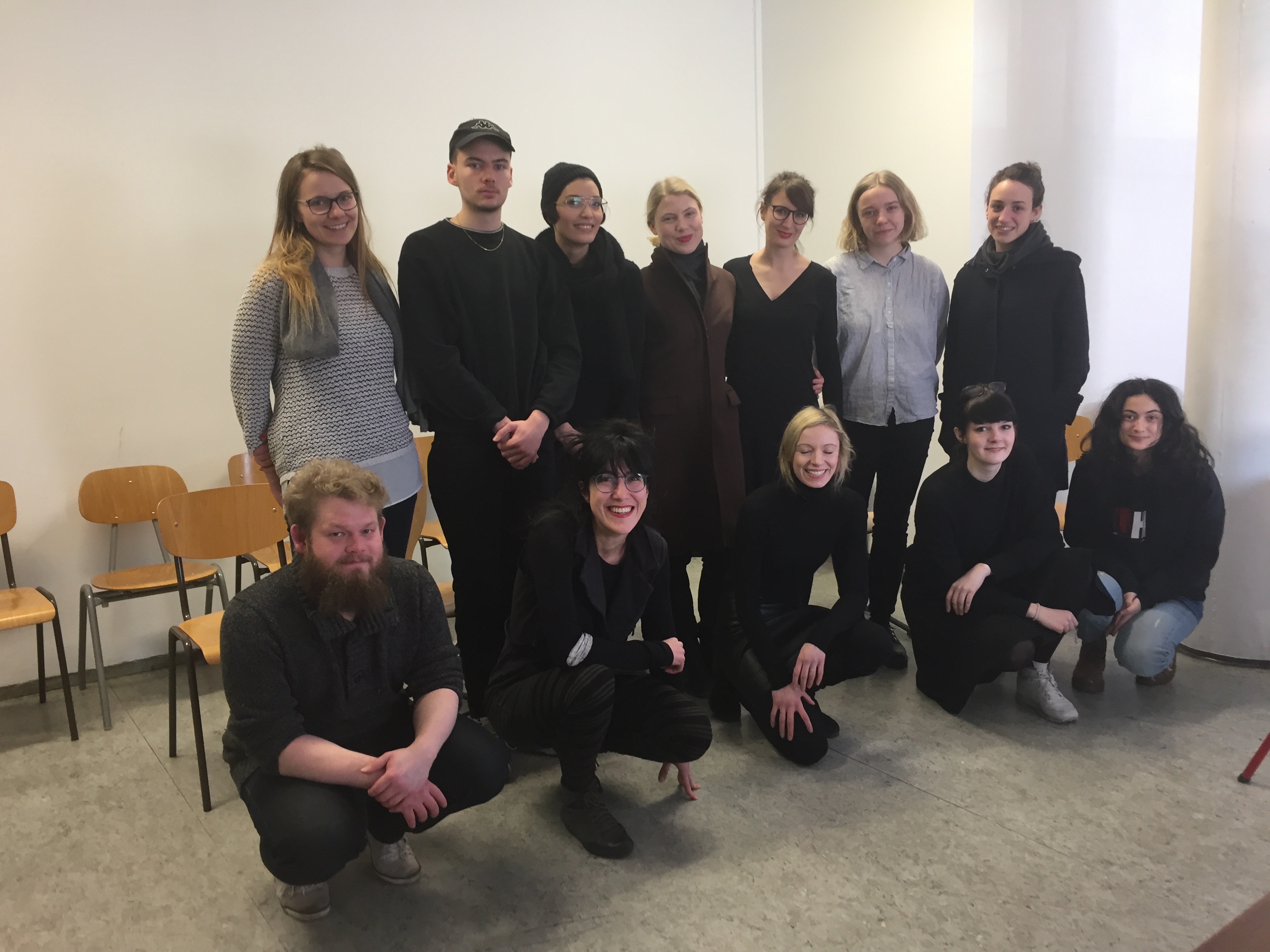
Why Athens? A critical review of Documenta 1
What significance did Athens have for documenta 14, and how does Kassel's interest in the Greek capital inscribe (or rewrite) itself into the modern tradition of a positively or negatively charged Graecomania? How do discourses on the North-South divide or the 'Global South' contribute to this? In addition, how should we understand the suggestion of learning from Athens? And what does it actually mean to formulate a knowledge imperative (or lack thereof) in the center of contemporary art production? Using selected artworks, work constellations and texts, the seminar offers a critical examination of the selection and arrangement processes and of documenta 14, as well as its main questions (political activism, trauma, writing and transcription of world and art history(s), etc).
Project seminars
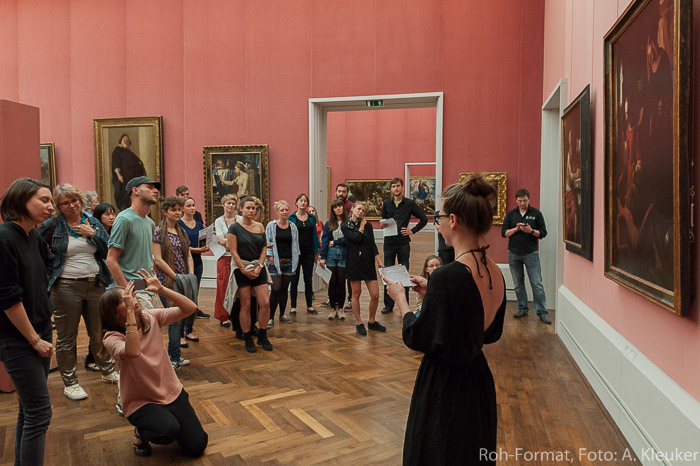
The Life of Pictures (SoSe 17/ SoSe 14)
The project seminar "The Life of Images" held in spring 2014 and 2017, offered students the opportunity to explore provenance research and the invisible past life of selected works art from the Gemäldegalerie, Berlin. Under the direction of Prof. Bénédicte Savoy, the students answered the following questions: Where do the paintings in the Gemäldegalerie come from? What is their history? Which places were they taken to and how did they change hands?
Summer term 2017
The seminar closed with the evening event "The Life of Pictures: The Secret about the Provenance of the Paintings in the Gemäldegalerie Berlin”. On July 20th the students presented the results of their provenance research directly in front of the respective paintings, thus revealing their past.
Summer term 2014
The students began by developing an "Art" Slam" which was presented at the Long Night of Science at the TU Berlin on May 10. The work of the "Art" Slam was expanded by the students and finally culminated in an event in the Gemäldegalerie on June 26th with the name: TO MOVE PICTURES!
Appropriation of Art - Perspective of the Expropriated
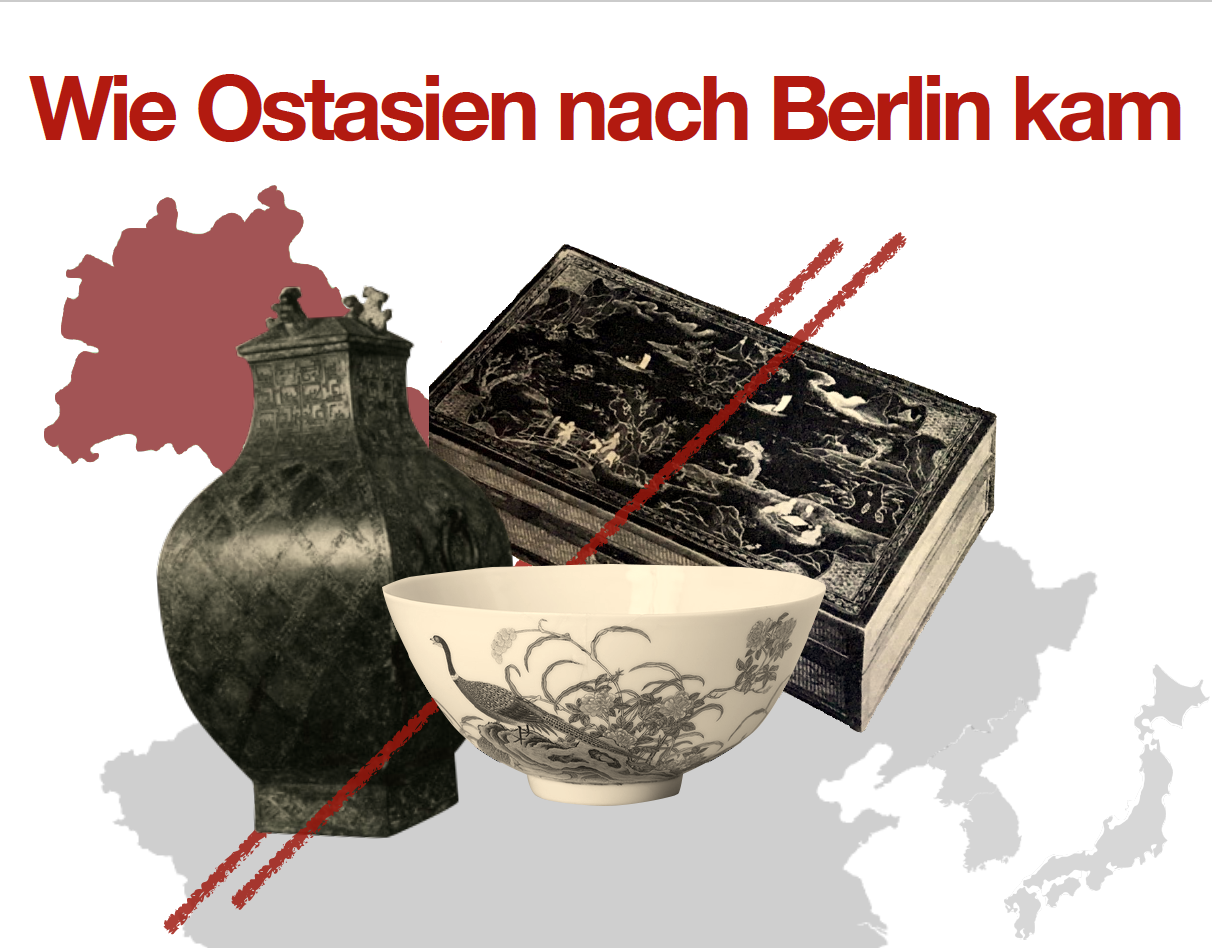
Provenance research on East Asian art
Current debates about the legal ownership of artefacts make research into their provenance one of the most important tasks of museums and research institutions of our time. In Germany, these were triggered not least by the construction and conception of the Humboldt Forum. Using the East Asian collection of the Berlin State Museums as an example, the seminar participants were introduced to the basics and methods of provenance research on non-European art and subsequently examined the origins of selected objects.
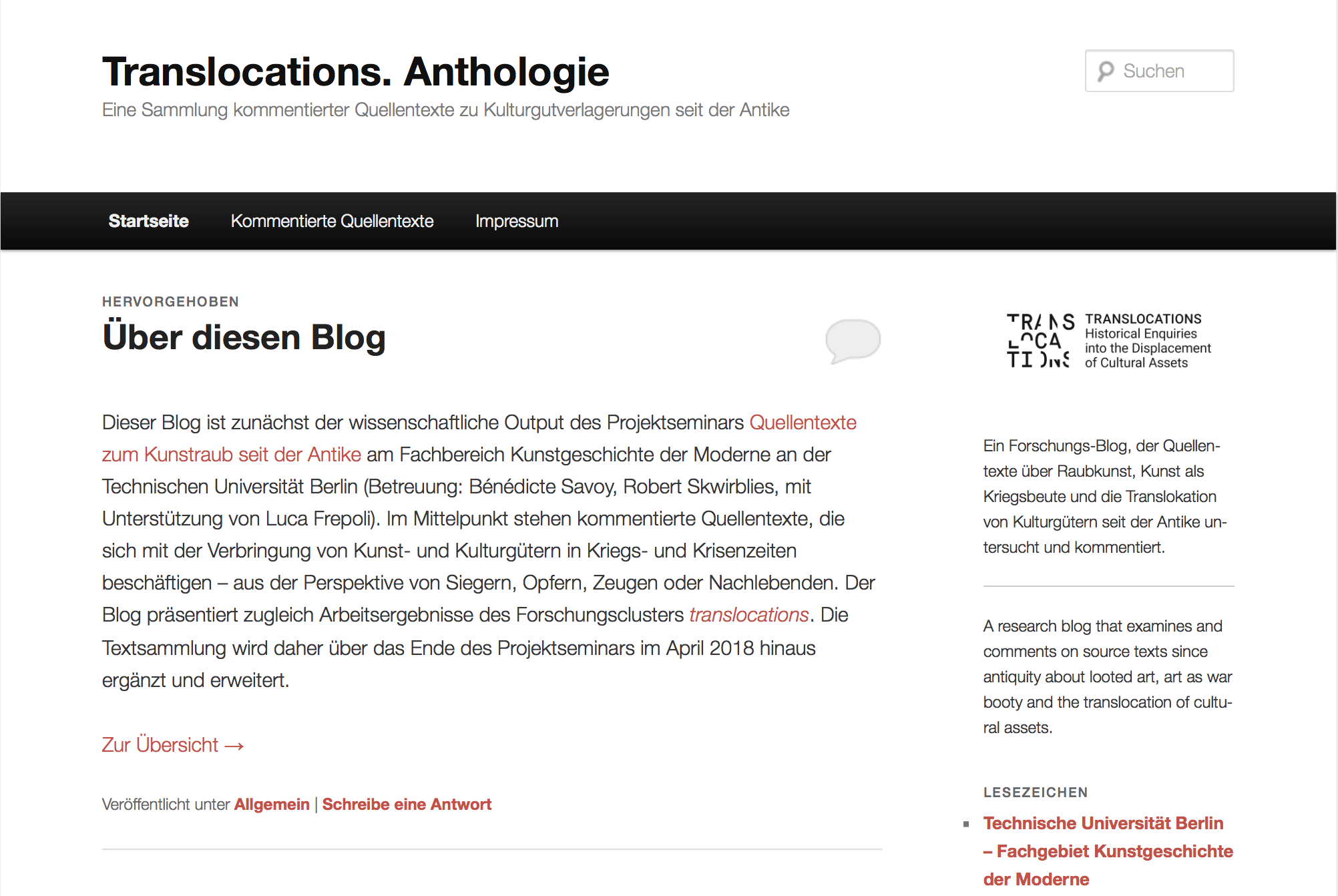
Source texts on art theft since antiquity
In the winter term 2016/2017, the students of this Master seminar searched for and examined relevant source texts on the subject of art theft and object transfer in and outside Europe since antiquity. These were written sources, some of which were hardly known, some of which were considered almost canonical, all dealing with the transfer of art and cultural assets in times of war and crisis, be it from the perspective of victors, victims, witnesses or survivors. The aim of the seminar was an academic and accessible anthology of key texts, which will be published as a book and is intended as a reference work for both specialists and the general public.

